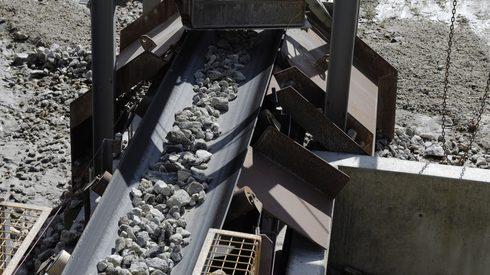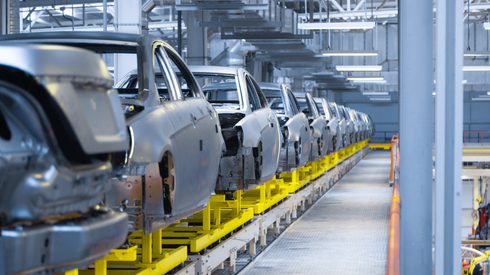To comply with an eventual 2050 target of net zero emissions, European steelmakers have been heavily investing in the decarbonization of their operations and are starting to produce steel using methods that reduce carbon dioxide emissions.
Green steel prices
Fastmarkets has launched four green steel prices in 2023 to assess the price differential against traditional flat steel prices, create transparency for the industry and support investment decisions needed to reduce emissions.
- Green steel domestic, flat-rolled, differential to HRC index, exw Northern Europe, €/tonne
- Green steel base price, HRC exw Northern Europe, daily inferred, €/tonne
- Green steel import, differential to HRC index, cfr Vietnam, $/tonne
- Green steel base price, hot-rolled coil cfr Vietnam, weekly inferred, $/tonne
The green steel expert panel
Fastmarkets talked to three green steel experts in Europe, highlighting the major priorities and challenges for this evolving market.
The panelists are:
- Jaap-Jan Aardenburg, distribution marketing manager at Tata Steel in Europe
- Stephan Flapper, head of sales, marketing and outbound logistics at H2 Green Steel, Sweden
- Erik van Doezum, ING global steel lead and head of metals, mining & fertilizers, Germany
How critical is an incentive for transparent premiums for green steel as mills invest in greener technology?
Stephan Flapper: It’s important to be able to claim a premium as the investment in electrolysis, direct reduction and electrification of steel plants are significant. The premium should be tied to the emissions as we still see a fair amount of players claiming green even though they are using substantial volumes of fossil energy, such as natural gas in their processes. What we hope, though, is that our case can act as the first real proof point for the commercial viability of green basic materials production, and it’s based on a green premium and early offtake agreements. The approach that we have taken to working with both investors and lenders is something we truly hope can be a precedent setting for others and that our project finance package, green premium and equity round will inspire many more projects across hard-to-abate industries, both investors, established companies and green field startups.
Erik van Doezum: Premiums are important for green steel producers to overcome higher costs. Obviously, transparency for that will simplify matters for both buyers and sellers. However, this is a very nascent market with no “real” green steel being available yet on the market. As such, price finding will differ in every situation and creating a benchmark is arguably too early. However, I do not think this will hold back the development of green steel projects. There are plenty of projects out there that see great opportunities in the green steel market even without transparent premiums.
Jaap-Jan Aardenburg: There will be premiums, of course, which will be based on the actual needs of CO2 reduction of the customer and this will differ of course per product.
Many OEMs feel little pressure to buy green and they deem current premiums too high. What factors will fuel the demand for green steel in the upcoming years?
EVD: I am not sure I agree with this statement. Arguably, currently there is one advanced greenfield green steel project out there (H2G Green Steel), and they have announced offtake contracts for the supply of green steel. As such, I do not think we can make the statement that demand is not there. With companies beyond automotive also making ambitious statements with regards to reaching net zero and intending to partner up with their suppliers this demand will only increase. As simple economics here drives the pricing discussion, I can imagine that many companies are playing coy as to what they are willing to pay. However, it is my strong conviction that in reality, green steel supply will run behind demand for the next 10 years, and as such premium price setting power will be held by the suppliers.
JJA: We do not agree with that [statement in the question]; there is an absolute realism that green steel requires a premium. OEMs, including their model, are multi-year projects requiring long-term planning, but the demand is there, the planning is there, not yet large volumes required.
SF: What we see is actually that demand is already high. We have already pre-sold close to half of our initial volumes in 5 to 7-year binding agreements with customers. The demand is driven by companies that have a high sustainability focus and most of them have signed up for Paris Climate Agreement-aligned Science Based Targets. They are in many cases already compensating for their carbon emissions, and think it makes more sense to pay and then get the green product, rather than to pay to offset emissions. Naturally the phase out of the free allowances to the incumbent steel industry will also fuel the demand for green steel.
How do you see green steel production evolving across global regions in the next five years? Which regions/countries will be notable?
JJA: Europe is with its fit for 55 [EU commitment to reduce new greenhouse gas emissions by at least 55% by 2030] in the lead, but we should not forget the developments in both China and North America. Local legislation (stimulating demand and supporting conversion) rules will play a driving role. But transforming steel production is a multi-year journey [requiring] investments, technology and capacity.
SF: Green steel production will likely center around the areas in the world where there is plentiful access to renewable electricity. Or at least the production of green HBI [hot-briquetted iron] will. We see that the Iberian Peninsula, Brazil, Canada and parts of the US are interesting and we are already looking into projects there. The European steel industry seems to be the frontrunner to invest in green steel technology, but the availability of green hydrogen at low cost in Europe is limited. We therefore expect that more investments will be planned to produce green hydrogen and green HBI in other parts of the world.
EVD: Green steel is changing the paradigm of steelmaking. Previously, access to iron ore and coking coal was key. If we believe that hydrogen-based reduction is the key solution until we have figured out direct electrolysis (as I do), steel companies will need access to renewable electricity (or its derivative, hydrogen) and high-grade iron ore in order to be competitive in this market. As such, places that have cheap renewable electricity will be at an advantage, at least when it comes to the reduction of iron. Therefore, I expect significant iron production to move to places like Northern Europe, Southern Europe and the Middle East and North Africa regions. Steel companies in Europe, Korea and Japan will have to make difficult strategic choices about where to produce iron going forward.
To be commercially viable, green steel needs a sufficient supply of green hydrogen and renewable energy at competitive prices. What is required to accelerate widespread adoption of green hydrogen for steelmaking in Europe?
SF: Europe needs to build out its production of fossil-free electricity. However, the volumes needed for large-scale electrolysis to produce the green hydrogen are significant. Therefore, it makes sense to place the most energy-intensive operations close to where the electricity is available and can be built out. A build-out of production of green HBI could then feed rebuilt steel mills where the blast furnaces are removed in favor of electric arc furnaces.
EVD: The answer is simple, abundant and therefore cheap renewable electricity! However, obviously that is not simple at all. Even if European governments would be able to over the next decade or so, install sufficient renewable electricity to decarbonize the steel sector, this would not solve the problem as our economies will experience a general stark increase in electricity demand. For electricity there will be several choices to be made. For instance between hydrogen production and developing EV charging networks. And even if we choose that hydrogen should be the priority, do we then prioritize iron production over fertilizers? These are not easy questions and what we really need is clear choices by politicians about what our strategic objectives really are. Subsequently, these need to be translated into clear and effective policies that can drive economic and strategic choices by companies and consumers. Unfortunately, at this juncture it seems we are still quite far removed from such a state.
JJA: Very clear availability of green electricity, both in generation and network to produce green hydrogen. The good thing, when we speak about DRI [direct-reduced iron] production, this can be fueled with natural gas as well, or in mix with hydrogen already saving a substantial amount of carbon
What kind of leadership is needed to grow green steel production and drive consumption, and where will it come from?
EVD: Economics will drive the growth in green steel production. As mentioned, I believe the example set by H2GS shows that there is already demand for green steel. This will only increase going forward as steel buyers set more ambitious decarbonization targets. Governments can support demand as well by requiring green steel to be used in government procurement projects. I am quite convinced that one or two companies being successful at producing and marketing green steel will create a snowball effect in the industry. There are several regions where the production of green steel should be economically viable. In other places, as mentioned above as well, governments also will have to decide on what their priorities are and set policies accordingly.
JJA: The will to change entrepreneurship to take responsibility for the future and [e-framework], not letting yourself be distracted too much from short-term disruptions.
SF: The industry transformation to green steel is a huge opportunity for the steel industry. By using near-zero [emission] steel, producers can reduce the footprint of their products substantially and this goes not only for automotive but also for construction products, domestic appliances and many, many other products. Green steel also becomes more competitive compared to other materials from a footprint point of view. The technology is available and the great advantage that steel has is that the whole supply chain, design, processing and tools used are not different for green steel to brown steel. The risk of changing to green steel, therefore is very low, as long as you have access to green steel. We need leadership in the steel industry that drives change by explaining the benefits of near-zero steel to end manufacturers, rather than to point to future costs of brown steel. Leaders that show the opportunity how near-zero steel can help product manufacturers reduce the footprint of their products and increase their value towards its customers. Leaders that engage with their customers, understanding their markets and their customers’ customers and help educate and explain the benefits of using near-zero steel to the end markets.
To keep up with the green steel discussion and to follow the critical developments in green steel pricing and low carbon steel production, visit our Green Steel Spotlight page.






